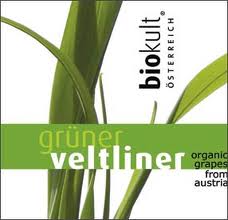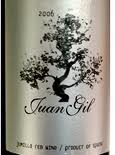(Robert Whitley’s Creators Syndicate ‘Wine Talk’ column for this week.)
Unlike many in the wine industry, I look back at 2010 with fond memories. I realize for wineries this past year was bittersweet. Prices seemed to stabilize, but there was nothing that resembled a rally in the direction of the previous highs. To be sure, 2010 was a buyer’s market from start to finish.
 The sluggish economy forced all who dealt in wine, particularly restaurants, to rethink their strategy. The most significant trend I witnessed in 2010 was the embrace of diversity and lower-cost wines by the restaurant trade, even in tony establishments.
The sluggish economy forced all who dealt in wine, particularly restaurants, to rethink their strategy. The most significant trend I witnessed in 2010 was the embrace of diversity and lower-cost wines by the restaurant trade, even in tony establishments.
It almost makes me think the days of boring wine lists foisted on restaurants by pushy distributors are over. Restaurateurs seemed to have a collective epiphany in 2010, finally coming to realize the dining-out segment of the population is more discriminating and curious than ever on the topic of wine.
Niche wines, such as Gruner Veltliner (a crisp white from Austria) or Jumilla (a luscious red from southeastern Spain), have fans throughout the United States and have made their way onto restaurant wine lists far and wide. So, too, has Viognier from Virginia, dry Riesling from New York’s Finger Lakes, and Malbec from Argentina.
If it’s well made and reasonably priced, the modern wine enthusiast will give it a go. This willingness to experiment seems to cross all the usual demographic boundaries. I know a doctor, for example, who once only drank expensive Bordeaux and Burgundy or A-list Napa Valley Cabernet Sauvignon. Today, he is mad about Malbec, a wine he only discovered after the recession caused him to re-evaluate what he had been spending on wine.
 Restaurants have also caught the spirit of bringing your own bottle. Many have reduced or eliminated (at least on designated nights) corkage fees, encouraging diners to dine out with a wine from their own private stock rather than stay at home to enjoy that experience.
Restaurants have also caught the spirit of bringing your own bottle. Many have reduced or eliminated (at least on designated nights) corkage fees, encouraging diners to dine out with a wine from their own private stock rather than stay at home to enjoy that experience.
I don’t pretend to understand the economics of running a top restaurant, but I’m quite certain a full restaurant with a reduced corkage fee pencils out better on the P&L than an empty restaurant with a hefty corkage.
Another trend of 2010 was the rebirth of Chardonnay, particularly California Chardonnay. The emerging style emphasizes balance and refinement at the expense of ripeness and intensity. The result is subtler Chardonnay that is slightly lower in alcohol and more expressive of its terroir, or place of origin. Good examples of this can be found from William Hill, Fogdog, Bouchaine, Nickel & Nickel and scores of others.
 And finally, 2010 saw the emergence of Washington, led by Chateau Ste. Michelle, as a key player on the U.S. stage. The growing popularity of Riesling is one component of the rise of Washington wine, but it’s also the realization that Washington has tremendous potential for Syrah, Merlot and Sauvignon Blanc — even Chardonnay.
And finally, 2010 saw the emergence of Washington, led by Chateau Ste. Michelle, as a key player on the U.S. stage. The growing popularity of Riesling is one component of the rise of Washington wine, but it’s also the realization that Washington has tremendous potential for Syrah, Merlot and Sauvignon Blanc — even Chardonnay.
Because Washington wines are relatively cheap compared to the more established vineyards of California, they will serve as a restraint on prices, or a rapid return to the days of placing a hefty price tag on a new, untried, untested wine just because you could.
For the consumer, I would say 2010 was a year of bounty and a year of discovery.
Wines came at you from all corners of the world and were better than you could have imagined. May 2011 bring us more of the same.
Email questions or comments to [email protected].
8
